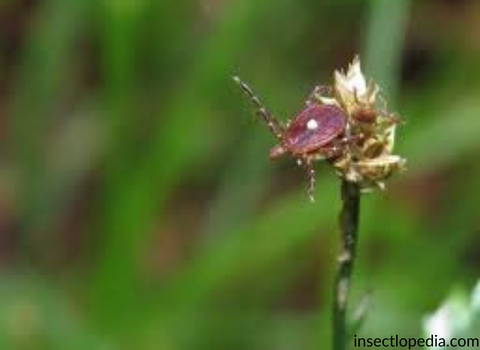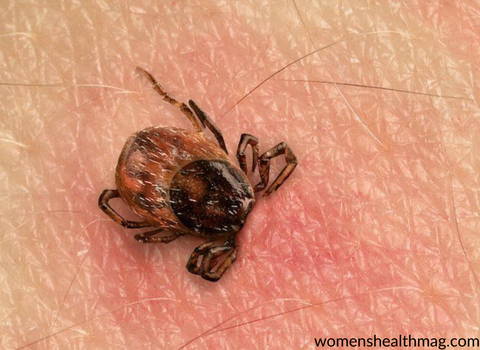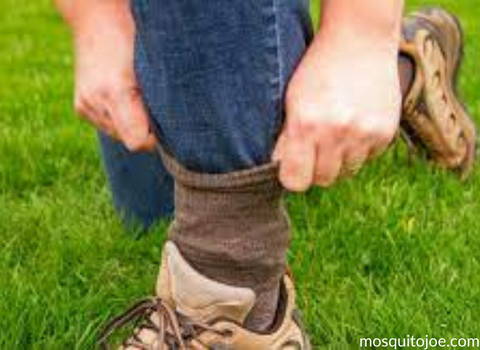Do Ticks Fly or Jump? How to Prevent Having Ticks in Your Home?
Ticks are known to end up biting people in their groin or armpit. However, how can a tiny tick reach these areas if they tend to hang out on plants or in the grass? Can ticks jump that high or do they fly to reach incredible heights? Read on and learn more about how these pests get into various places, why an infestation should be addressed, and how to deal with its presence.
Can Ticks Jump?
It is given that fleas and ticks share the same food sources. Because of this, many believe that ticks jump like fleas. However, what most people do not know is that fleas can jump to as high as 13 inches, but ticks are not as good as fleas when it comes to jumping. In fact, ticks cannot jump. Now, this crosses out the idea that ticks transport by jumping from one place to another.
Can Ticks Fly?
You might think that if ticks cannot jump, then maybe they can fly. Well, since ticks are a part of the Arachnida class, same with spiders. So just like spiders they technically cannot fly. No tick species have wings, which means that regardless of the species present in your home these pests will not be flying around.
Now, you might be wondering, how do these annoying ticks go around if they cannot jump or fly? Well, they are known for other tricks to get around.
How Ticks Find Their Host
There are two categories that ticks belong to. There are hard-shell and soft-shell ticks. Soft-shelled ticks are more like bed bugs when they are finding prey. They usually live in the same nest as their host animals. What they do is crawl around the host nest when searching for food during the night. They usually join in quick feeding sessions.
On the other hand, hard-shell ticks are a bit different. They are not only known for their long time to feed but they are also known for their abilities like web-building spiders when finding their prey. They do not go out of the prowl like soft-shell ticks. What hard-shell ticks do is that they find their hosts through questing.
How Ticks Do Questing
Hard-shell ticks are known for their patience. Just like spiders building their webs, they wait patiently until their preys come to them. They prepare for their prey by questing. They plant themselves on the leaves or grass and raise their first pair of legs in the air. As they set their legs in this position, they will wait until a potential host passes by that will allow them to climb and transport themselves with the passing host.
This is a stance where a tick uses the back two pairs of legs to hold onto leaves or grass with their first pair of legs outstretched, ready to hold on to any prey that may pass by. As they latch onto the unsuspecting victim, they will start searching for a crucial place where they can start feeding.
Since hard-shell ticks tend to wait for a new host before they take their blood meal, they also take longer to feed than soft-shelled ticks.
Soft-shelled ticks live in the same nests as their host and go for short feedings before they return to their safe abode. They crawl to their host as they search for food. Many tick species can survive winter. Many believe that these pests go dormant during the cold season, but this is not true. Ticks can survive if the ground temperature is about 32° F or 0° C.
How Do Ticks Survive?
Most ticks undergo four life stages and include eggs, six-legged larvae, and eight-legged larvae before they turn into adult ticks. After the eggs hatch, ticks should feed with blood so they can survive every stage.
This means that they will require many hosts so they can go through these stages. This may take up to about 3 years for them to complete a life cycle. Most of them die because they cannot find a host to feed on to survive another stage.
Some tick species such as the brown dog tick choose to feed on one host throughout their life stages. Ticks usually feed on small mammals, reptiles, birds, and amphibians.
Do Ticks Spread Disease? How?
Ticks are known to transmit pathogens causing disease whenever they are feeding. Preparing to feed depends on the tick species and their life stage. It may take about 10 minutes to 2 hours.
Once a tick finds a spot, it will grasp on the skin and cut into the surface. It will then insert the feeding tube that may have barbs that keep the tick in its place. Many species also secrete a cement-like substance, which lets them attach quickly and firmly during feeding.
They may also secrete tiny amounts of their saliva which has anesthetic properties that allow them to attach themselves without the host animal or person knowing. If it is in a sheltered spot, the host may not notice it easily.
Ticks will slowly suck blood for days. In case the host animal already has a bloodborne infection, then the pathogens from the blood will also be ingested by the tick as it feeds on the blood. Among the common diseases from ticks are Rocky Mountain Spotted Fever, which is transmitted by the American dog tick and Lyme disease, which is transmitted by the deer tick.
Since ticks also secrete saliva when feeding, they may also contain pathogens that may be transmitted through feeding. After they feed, many tick species will drop off and then move on to their next life stage.
How to Reduce Chances of Bringing Ticks into Your Home
There are several ways how you can minimize the chances of getting ticks and bringing them to your home. Some of these are the following:
Trim thick vegetation and shrubs
This will help eliminate the areas where ticks can quest.
Follow Tick Preventive Strategies When Hiking
If you tend to bring your pets when hiking or travelling in different areas, you should always observe tick preventive strategies.
Take Extra Care When Walking on Beach Access Areas and Trails.
Make sure that you always walk on paths that will keep you and your pets away from low bushes. Stay away from any tall grass like cattails.
Wear Light Colored Clothing When Hiking
It is recommended that you wear clothes that will help you spot ticks easily. You should also tuck pants inside the socks when hiking to prevent these pests from crawling undergarments and remaining unnoticed till they find a feeding spot. Being able to remove a tick safely within 24 hours of being bitten will reduce the risks of getting an infection.
Try to do these things when going out and it will lessen the risks of you getting these ticks in your clothes or your pets getting them and bringing them home. his will also save you from suffering from health risks brought by tick bites.
Below are products we recommend that can help repel ticks when you go out:





